He Honoka Hauwai
As part of the Green Hydrogen Project led by Prof. Sally Brooker we are running outreach in Southland focused on the new technology. This involves the use of hydrogen fuel cell kits in around 20 schools across the region. This news article looks at our first engagement with schools around this project.
Mysterious Chemistry
As part of the International Science Festival the team put on a show called ‘Mysterious chemistry’, which was a collection of demonstrations intended to provoke the question “how does that work?”. We ran two shows on Sunday 9th June in the Castle 1 lecture theatre to about 500 people over the two shows. Here are a few pictures to give you a feel of what it was like.


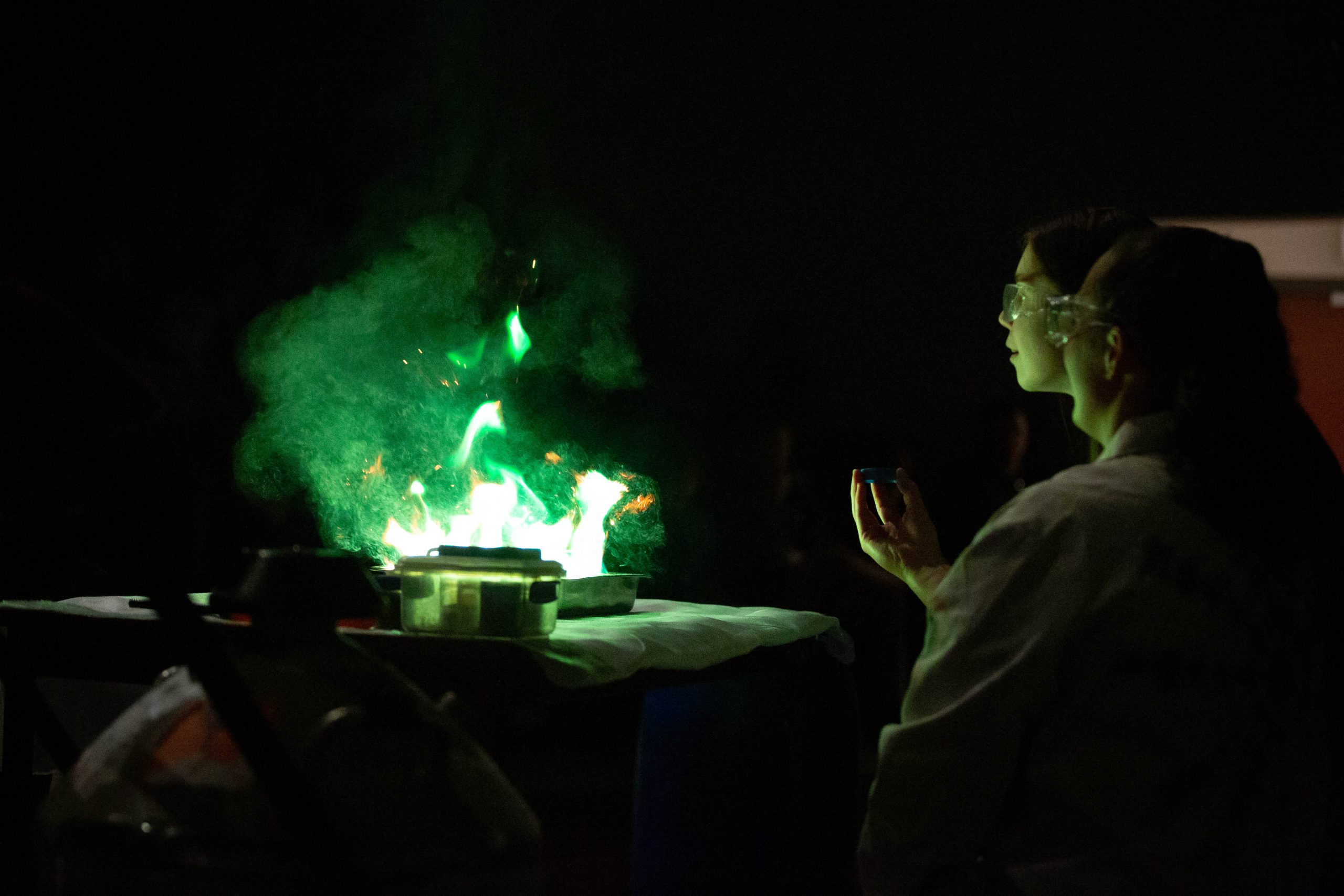
Density bottles
The recent round of outreach has been making density bottles, kids love them and they are very relaxing to watch. The original idea was taken from a paper in The Journal of Chemical Education. (J. Chem. Educ. 2015, 92, 9, 1503–1506, https://doi.org/10.1021/ed500830w)
The top liquid is iso-propanol and the bottom one is a saturated solution of salt. The liquids mix when you shake them but just like oil and water will separate out when you leave them to stand. The beads in the bottle are made out of two plastics, their density is greater than the iso-propanol but less then the salt water so they float in the middle of the bottle. When the bottle is shaken the density of the mixture is between the density of iso-propanol and salt water and one set of the plastic beads are less dense than the mixture and the other set is more dense so they separate out, slowly coming back together as the mixture separates back into it’s components.
Te tai Tokerau Wānanga
An article about a trip we did to Te Tai Tokerau as part of a Division of Sciences Wānanga to work with Rangatahi and Kaiako at Kaitaia College can be found at this link

Growing crystals. ALUM
We have three methods for growing crystals. This is the simplest method and can be used for growing alum crystals. It’s the material commonly found in commercial crystal growing kits and the crystals can be coloured using food dye. The chemical name for alum is potassium aluminium sulfate and it is a relatively cheap material with a number of uses including a mordant for dyes and for clearing drinking water. 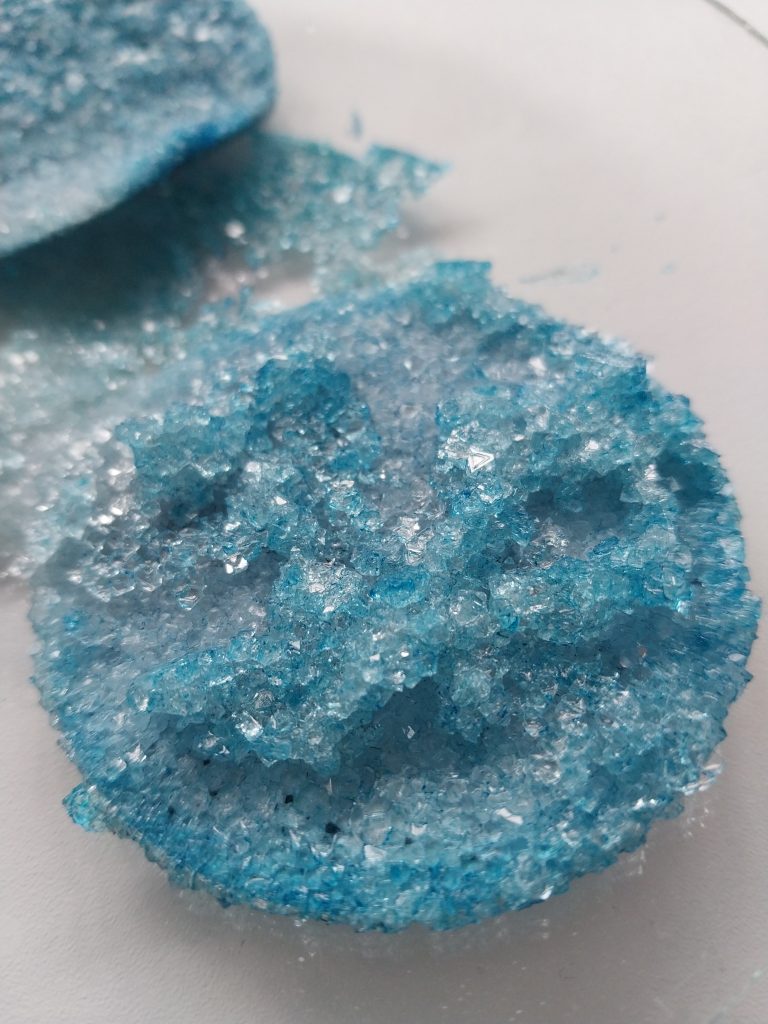
The process of crystal growing involves creating a saturated solution (no more of the solid will dissolve in the water) at a higher temperature than your room. We use hot water out of a jug and add ~30 to 40 g for every 100 mL of water (5 to 10 flat teaspoons to half a cup of water). Add the dye to the water before you add the alum.
The water doesn’t have to be boiling but the hotter it is the quicker things will dissolve and the more alum will dissolve. If you use cooler water then add less alum, otherwise it won’t all dissolve.
When no more alum will dissolve in the water pour some of the solution over a paper towel or similar on a shallow dish. We use filter paper and lab glassware but it’s not necessary. The paper will hold the crystals together and the shallow dish allows the water to evaporate quickly.
Leave the solution until all the water has evaporated and you should get some nice coloured alum crystals.
Malaysia 2019 Part 3: The road to Long Semadoh
Far too early on Sunday the 23rd, Otago team A bid a sleepy farewell to Kuching and hailed a convoy of cabs to the airport bound for Miri. Meanwhile, some 7800km away, Otago team B boarded flights to Singapore. For both teams this was the first leg of a journey to the same destination: a town of ~1900 citizens in the middle of the Sarawakian jungle, Long Semadoh.
From Miri, team A took a 45 minute, 20 seater flight to Lawas where we met the multi-talented Dolphina. Dolphina was facilitating our stay with her family in Long Semadoh and would be our ever-patient guide, host, and mentor over the next week.
From Lawas, the team assembled in two trucks for the 4 hour logging-road hill-climb to the village. In recent years the road has been re-graveled and pressed- prior to that, it could take a convoy of trucks 3 days to reach Lawas from Long Sem. From my vantage in the covered bed of the truck, I was deeply grateful for the investment in infrastructure.
Upon arrival we were greeted by several members of the community- friends and family members of our hosts, teachers from the local school, and various members of the community just curious about the arrival of two Hilux’ full of stunned New Zealanders.
We were graciously invited to stay in the headman’s house where we made ourselves at home before driving down to check out the local school. The first impression from Dave Warren, after five years of chemistry outreach, was that it might be the most beautiful school we have visited yet. Hibiscus, orchid, and red fan palms flank the covered walkways; a bamboo sided hut built over a pond serves as a relaxation area for the teachers; over the netball court, a temporary structure had been built to serve as our lab in the days to come.
This blog will be updated periodically as the trip progresses, but you can also keep up with the team on facebook, twitter, youtube, and Instagram at the following URLs
Otago chemistry outreach page: https://www.facebook.com/chemotago/
Youtube: https://www.youtube.com/channel/UCvEnYDv1AdrA016_E86Fj0w
Twitter: https://twitter.com/chemotago
Instagram: https://www.instagram.com/chemotago/
Malaysia 2019 Part 2: SMK Muara Tuang
Though Malaysia has become an annual pilgrimage for the Chemotago team, we rarely have the privilege of returning to the same school twice. This year however we got to return to one of our favourite campuses from 2018: SMK Muara Tuang.
SMK Muara Tuang is a high school situated on the outskirts of Kuching. In typical Sarawakian style, it boasts a gorgeous colourful campus, clean breezy labs, and keen confident students: ideal conditions for a post-kemasains school visit.
After the customary light morning tea (curry, glutinous rice, chicken, sweet coffee, layer cake) the team split into three stations: two chemistry, one physics. The students would spend an hour at each station, before rotating so each group had a full session at each station.
The physics group (members of the Otago Optics Chapter) showed how lasers interact with polarised lenses, used spectroscopes to demonstrate how different elements emit distinct wavelengths of light, and explained how this is applicable to the identification of stars and planets.
The first chemistry station was a pair of hands-on chromatography sessions. First the students applied felt pen to TLC plates and watched it separate out, revealing the component colours of each ink. They then gathered leaves and flowers from the surrounding garden and performed their own seperations on them, producing some beautiful gradients. Hibiscus flowers produced a particularly vivid result.
The second chemistry station got to show off a new demonstration: how to make surfaces repel water. The experiment was designed by outreach team member Sean Mackay, based on a research article on producing transparent superhydrophobic coatings for paper. Another outreach veteran Sam McIntyre performed the material prep and with 5 hours of reflux, plus filtration and drying, it was a quick prep.
The results of the experiment easily justify the prep time. After mixing, applying, and drying the hydrophobic material, any liquid poured onto the surface completely fails to adhere, instead forming perfect spherical droplets which can be pushed around the surface, or pooling like transparent mercury.
You can check out a condensed video of the teaching session here: https://www.youtube.com/watch?v=l8WhGUG2l_k
This blog will be updated periodically as the trip progresses, but you can also keep up with the team on facebook, twitter, youtube, and Instagram at the following URLs
Otago chemistry outreach page: https://www.facebook.com/chemotago/
Youtube: https://www.youtube.com/channel/UCvEnYDv1AdrA016_E86Fj0w
Twitter: https://twitter.com/chemotago
Instagram: https://www.instagram.com/chemotago/
Malaysia 2019 Part 1: Kemasains in Kuching.
Here we are again, back in our favourite city, Kuching in Sarawak. It’s a great place for outreach, with lots of old friends from IPG Batu Lintang and new students to work with.
First day activities today were briefing the IPG student teachers who were going to be supporting us for the rest of the week and then preparing and packing for the Kemasains activities later in the week
It was a hot day for a team just arrived from chilly NZ but everyone was relaxed and happy to be back in what feels like our second home
A view of outreach from two students
The article, in the link below, was written by two of our chemistry outreach leaders, Geoffrey Weal and Brianna Nally. It was original published in Chemistry in New Zealand, April 2018, pp74-78, and offers a great insight into why students get involved and what they learn from their experiences. They were both part of the amazing teams we took to Taiwan and Malaysia in 2017 and 2018.
Red Cabbage Indicator
There are a variety of plants that can be used as pH indicators but one of the easiest to find with the widest range of colours is red cabbage. One school we work with have planted a garden with red/purple plants and flowers for the kids to test.
We use it to introduce the concept of acids and bases and where they fit on a scale. It’s also a good introduction into why scientists use numbers eg pH numbers rather than colours (ask a class to point something that is red in the classroom and you’ll see what I mean).
We usually use a set of buffers to create the cabbage pH range:
Citrate buffer
3.0 pH:
Sodium citrate (100 mg , 0.35 mmol) + citric acid (977 mg, 4.65 mmol)
4.0 pH:
Sodium citrate (500 mg, 1.7 mmol) + citric acid (693 mg, 3.3 mmol)
5.0 pH:
Sodium citrate (867 mg, 2.95 mmol) + citric acid (431 mg, 2.05 mmol)
6.0 pH:
Sodium citrate (1.22 g, 4.15 mmol) + citric acid (200 mg, 0.95 mmol)
Sodium phosphate buffer
7.0 pH:
Disodium phosphate (1.73 g, 12.2 mmol) + sodium dihydrogen phosphate (1.08 g, 7.8 mmol)
8.0 pH:
Disodium phosphate (2.69 g, 18.9 mmol) + sodium dihydrogen phosphate (146.2 mg, 1.06 mmol)
Bicarbonate-carbonate buffer
9.0 pH:
Sodium carbonate (212 mg, 2.0 mmol) + sodium bicarbonate (672 mg, 8.0 mmol)
10 pH:
Sodium carbonate (742 mg, 7.0 mmol) + sodium bicarbonate (252 mg, 3.0 mmol) –

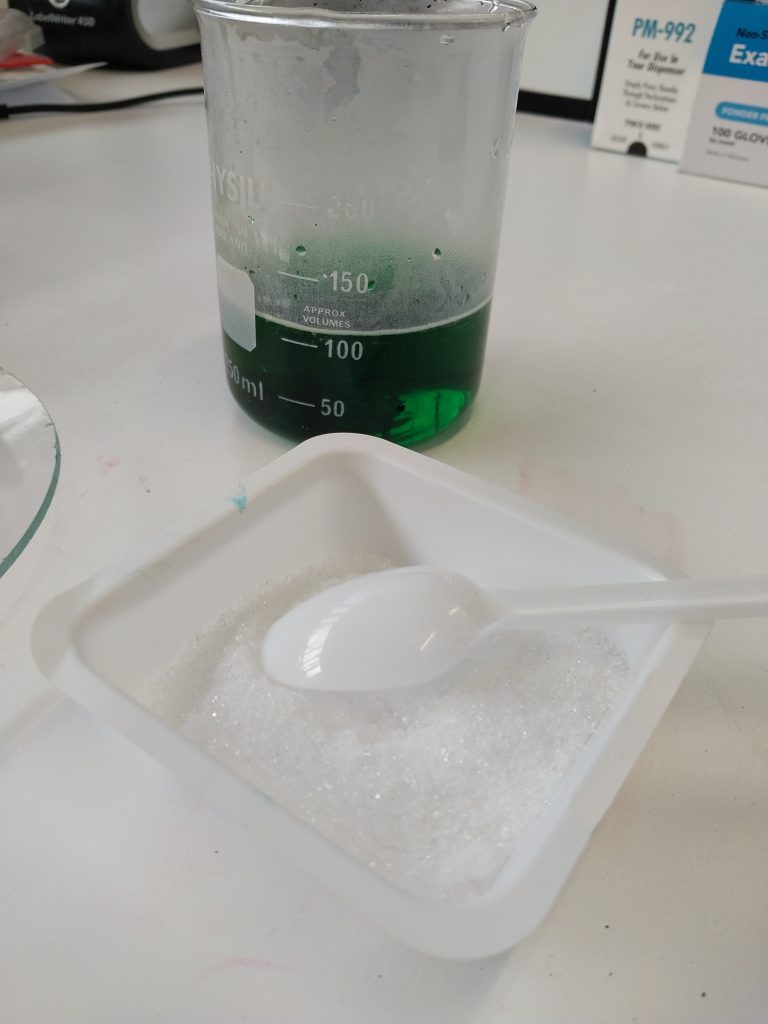

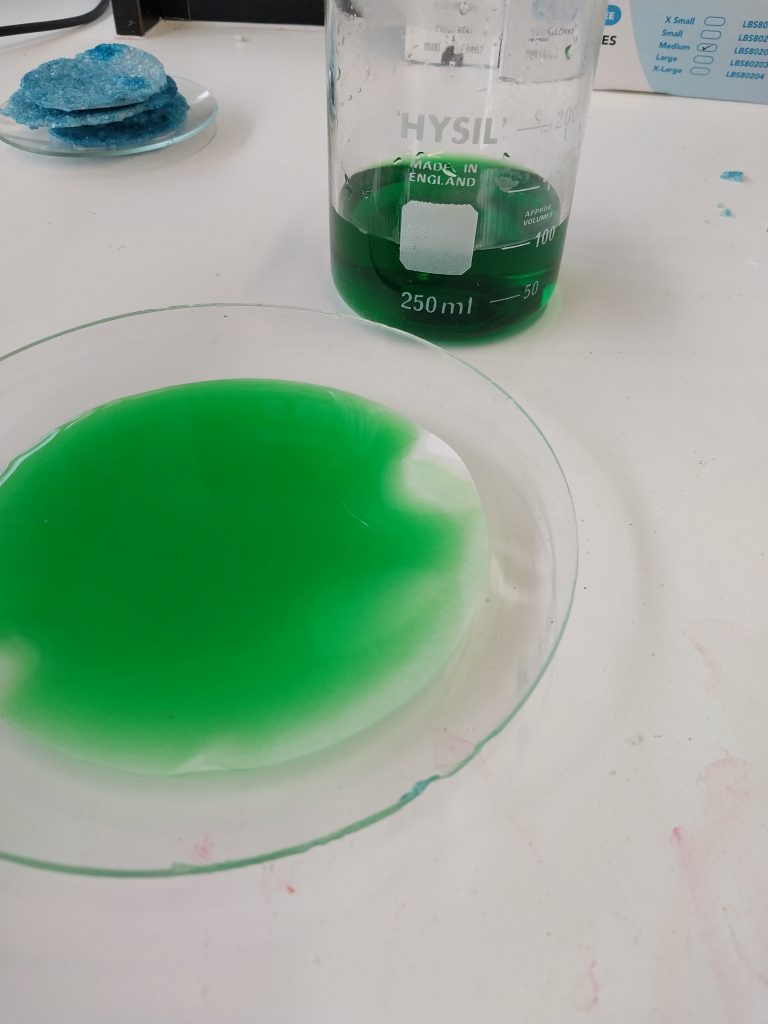








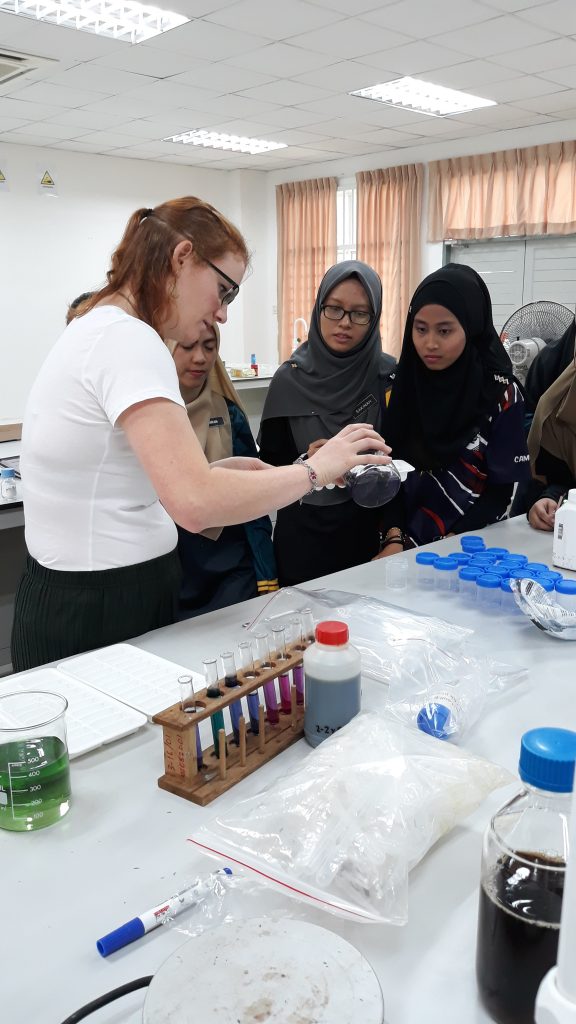

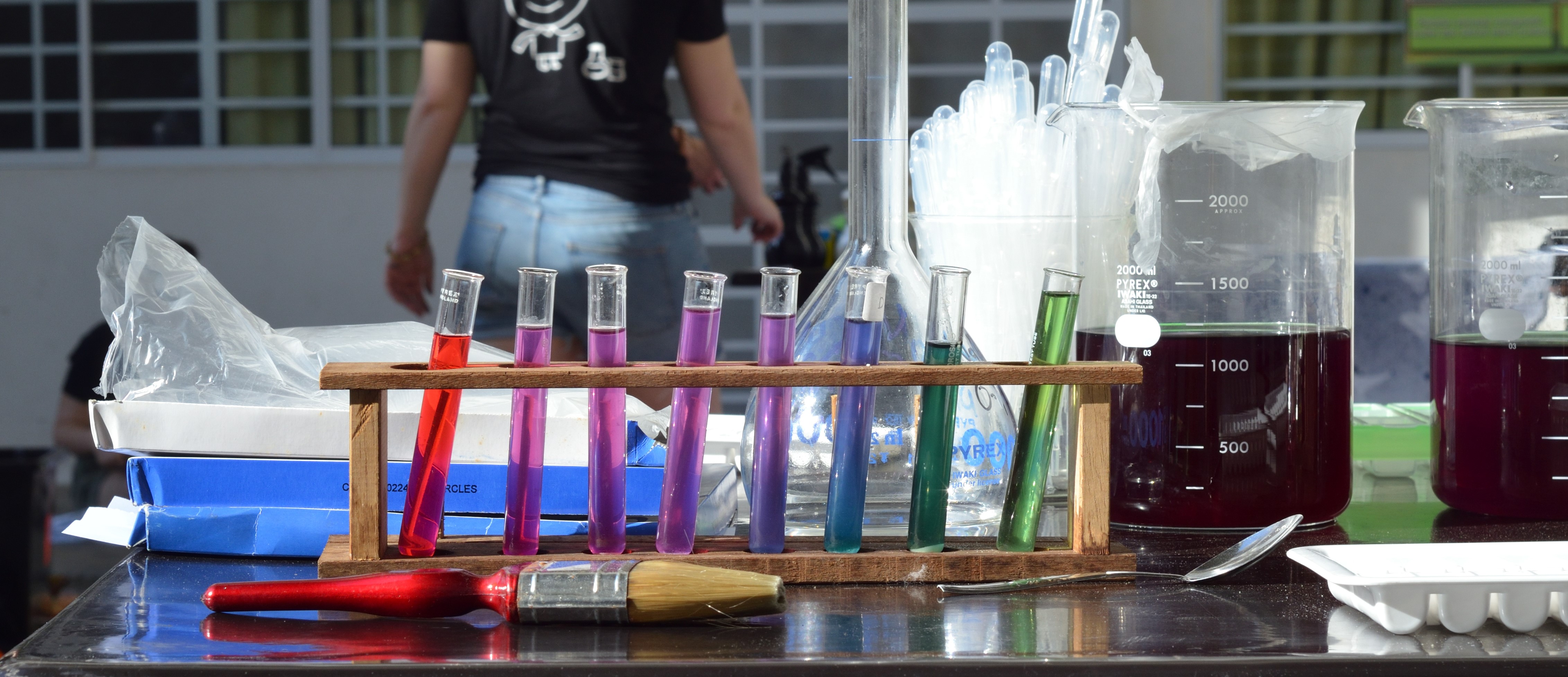

Recent comments